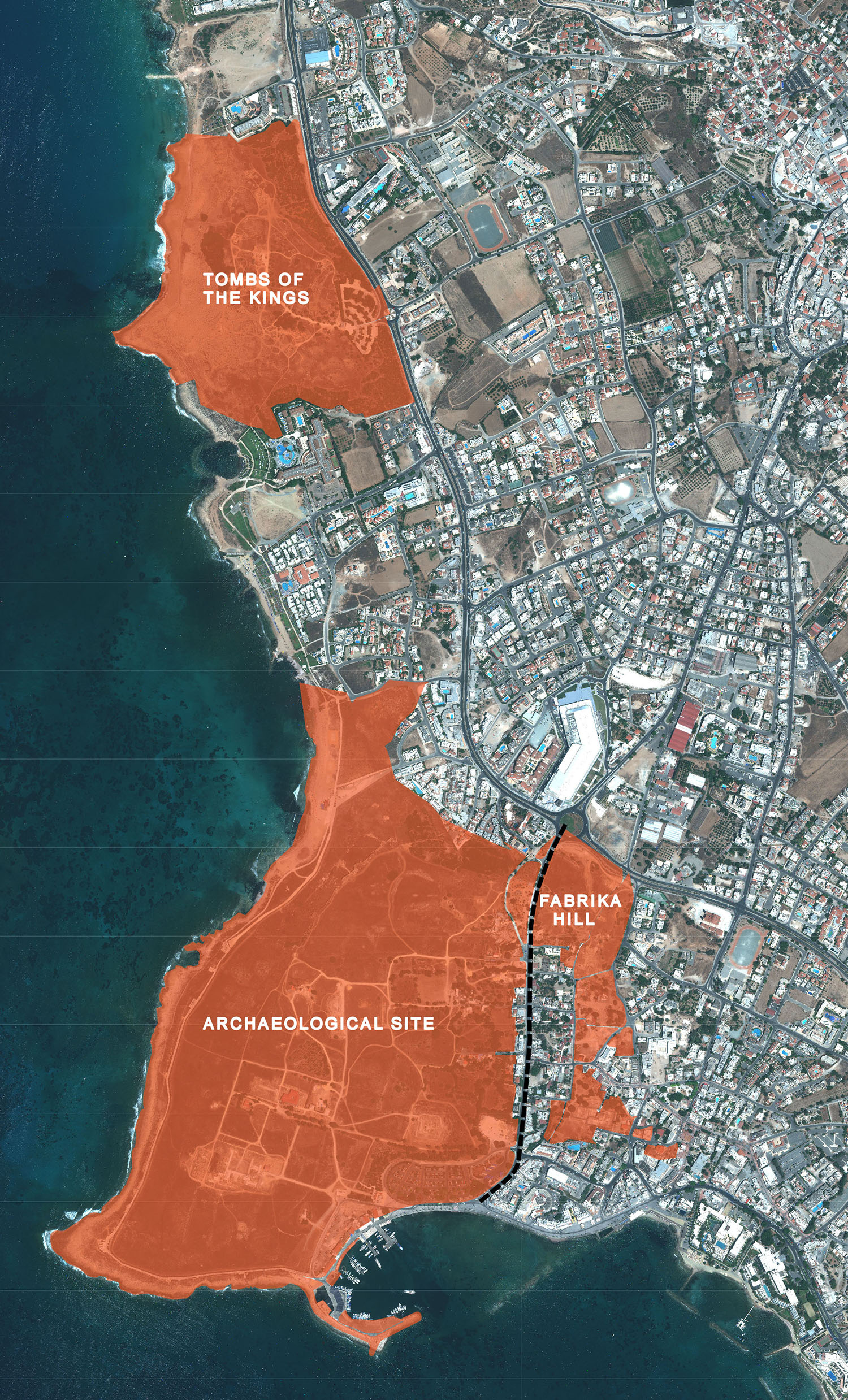Overview
We are working in partnership with the Department of Antiquities in Cyprus, on a multiyear project to develop a conservation and management plan to guide the preservation of Nea Paphos, one of the richest sites of mosaic pavements in the eastern Mediterranean region, with significant remains from the Hellenistic, Roman, early Christian, and Byzantine periods, as well as Frankish and Ottoman monuments. Our collaborative work is aimed at protecting the values of Nea Paphos (historical, artistic, social, and natural) and communicating these values to the people of Paphos and to visitors from around the world.
A Long-Standing Relationship with Cyprus
Conservation of archaeological sites has been central to the mission of the Getty Conservation Institute since its founding; the first field projects we undertook were at important archaeological sites—the Tomb of Nefertari at Luxor (initiated in 1986) and the Roman Mosaic of Orpheus and the Beasts at the site of Nea Paphos (begun in 1988).
Since the initial project for the Orpheus mosaic, the Getty has maintained a strong relationship with Cyprus, partnering in experts' meetings, training courses, evaluations of protective shelters, and an international conference, all related to mosaics in their archaeological context. Our current collaborative project with the Department of Antiquities of Cyprus continues and deepens that relationship with place and people.
Historical Background
Cyprus has always been a major crossroad absorbing and transmitting influences between east and west. It has equally been a place of strategic and economic interest to the competing powers in the region. After the death of Alexander the Great in 323 BCE, Cyprus was annexed by Ptolemy, inheritor of Egypt. With a good harbor and timber in the surrounding hills for shipbuilding, Paphos was an important naval base. In the second century BCE it became the capital and administrative center for the island. Cyprus was annexed by Rome in 58 BCE as the Roman Empire began its expansion eastward, becoming a province of Rome in 22 BCE with its capital at Nea Paphos. The city remained the political center of Cyprus until the fourth century CE when power was transferred to the eastern part of the island. Nea Paphos however, continued to be of importance as Christianity gained ascendancy and left its imprint on the culture and the built environment. The Christian identity of the city manifested itself through the late Byzantine and Medieval periods, especially under Frankish rule of the crusader era.
The World Heritage Site of Paphos and its Necropolis
The World Heritage site of Paphos and its Necropolis is composed of two ancient cities 15 km apart, Nea Paphos and Palaepaphos. This sprawling site includes highly significant remains from the Hellenistic, Roman, early Christian, and Byzantine periods, as well as monuments from the middle ages.
Nea Paphos, the focus of the Getty's collaborative project, is one of the richest sites in mosaic pavements in the eastern Mediterranean region. It includes three principal areas:
Archaeological Park
The well-defined archaeological core, known as the archaeological park, covers 950,000 square meters and includes the most important remains from the Hellenistic and Roman periods. Although much of the Hellenistic city was destroyed by earthquakes and extensive Roman rebuilding, the impressive rock-cut foundations of the city wall, gates, towers, and ramps, several significant buildings, as well as important black and white pebble mosaics, survive from this period.
Paphos' status as the capital of the Roman province is seen in the palatial building complex known as the Villa of Theseus (home of the Roman governor) and in the large private residences that were decorated with the magnificent mosaics for which the site is now best known and which give their names to the residences. This part of the site also includes the Agora, an Odeon for performances (ancient and contemporary), a historic lighthouse (1888) still in use, the Medieval fortress of Saranda Kolones, and many other buildings, cave sanctuaries, and features.
Fabrika Hill Area
Beyond the core area, separated by a modern commercial street, are additional archaeological remains and historic structures, all interspersed with the traditional and modern buildings of the old city. These include a theater of the Hellenistic-Roman period, monuments of the early Christian, Byzantine, and Medieval periods and extensive underground chambers and quarries of the Fabrika site. In the fourth century, Christianity began to have a major influence on the spiritual life and physical fabric of the city. This can be seen in the largest early-Christian church in Cyprus, the seven-aisled basilica of Chrysopolitissa, decorated with mosaic pavements.
Necropolis (Tombs of the Kings)
The third part of the Nea Paphos site, 2 km north of the archaeological core, on the coast, are the so-called Tombs of the Kings, whose construction coincides with Ptolemaic rule in Cyprus in the Hellenistic period. The excavation of the bedrock to create the tombs provided building stone for Paphos.


